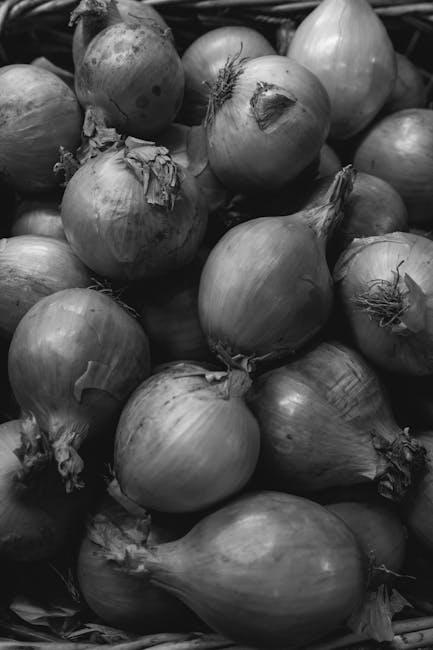When it comes to nourishing our beloved canine companions, pet owners often find themselves navigating a sea of dietary options, each claiming to be the best for their furry friend’s health and well-being. Among these choices, the question of whether dogs should eat raw or cooked vegetables frequently arises, sparking lively debates among veterinarians, pet nutritionists, and dog lovers alike. This article aims to shed light on this topic, providing you with a comprehensive understanding of the benefits and potential drawbacks of both raw and cooked vegetables in your dog’s diet. By exploring the nutritional value, digestibility, and safety of each option, we hope to equip you with the knowledge needed to make an informed decision that best suits your pet’s individual needs. So, let’s embark on this journey together, as we delve into the world of vegetables and discover what truly serves our canine companions best.
Understanding Your Dogs Dietary Needs
When considering whether to feed your canine companion raw or cooked vegetables, it’s important to recognize the unique benefits and potential drawbacks of each option. Raw vegetables can be a great source of fiber, vitamins, and minerals. They help maintain a healthy weight and support digestive health. However, some dogs may find raw vegetables difficult to digest, and certain raw vegetables can be hard on their teeth.
On the other hand, cooked vegetables can be easier on your dog’s digestive system and might be more palatable for picky eaters. Cooking can also reduce the risk of harmful bacteria that might be present in raw produce. However, it’s essential to avoid adding any seasonings or oils that could be harmful to your pet. Consider offering a mix of both to balance nutritional benefits while catering to your dog’s individual preferences. Here are some dog-friendly vegetables you might consider:
- Carrots
- Green beans
- Sweet potatoes
- Broccoli
- Spinach
Ultimately, the choice between raw and cooked vegetables should depend on your dog’s specific needs and preferences. Always introduce new foods gradually and observe your pet’s reaction to ensure they enjoy and benefit from their meals.

Exploring the Benefits of Raw Vegetables for Dogs
Incorporating raw vegetables into your dog’s diet can offer a multitude of health benefits. These crunchy delights are rich in essential nutrients and enzymes that might be lost during the cooking process. Raw vegetables are packed with vitamins, minerals, and antioxidants that can boost your dog’s immune system, promote healthy skin and coat, and support overall well-being. Some of the most popular raw options include carrots, broccoli, and spinach. These veggies not only provide a refreshing crunch but also help clean your dog’s teeth, reducing plaque buildup naturally.
- Carrots: High in beta-carotene and fiber, great for vision and digestion.
- Broccoli: Contains vitamin C and calcium, promoting bone health.
- Spinach: Offers iron and antioxidants, supporting cardiovascular health.
While raw vegetables can be a nutritious addition, it’s essential to introduce them gradually and observe your dog’s reaction. Some dogs may have difficulty digesting certain raw vegetables, so it’s crucial to monitor for any signs of discomfort. Ensuring that the vegetables are thoroughly washed and cut into manageable pieces can help prevent choking hazards and make the experience enjoyable for your furry friend.

Cooking Vegetables: What Your Dog Can Gain
When it comes to feeding your dog vegetables, cooking them can offer a host of benefits that raw veggies might not provide. Cooking vegetables often makes them easier to digest, allowing your furry friend to absorb nutrients more effectively. This process can also eliminate certain harmful bacteria that might be present in raw produce, ensuring a safer dining experience for your pet. By breaking down the cell walls of vegetables, cooking can enhance the release of vitamins and minerals, which can contribute to your dog’s overall well-being.
- Improved Digestion: Cooked veggies are softer and easier on your dog’s stomach.
- Enhanced Nutrient Absorption: Cooking unlocks nutrients, making them more accessible.
- Reduced Risk of Bacteria: Cooking kills harmful bacteria that might linger on raw vegetables.
Incorporating cooked vegetables into your dog’s diet can be a delightful way to provide variety and essential nutrients. Remember to keep the cooking simple—steaming or boiling without added salt, spices, or oils ensures that your dog enjoys the benefits without any adverse effects.
Crafting a Balanced Vegetable Diet for Your Furry Friend
Incorporating vegetables into your dog’s diet can offer numerous health benefits, but finding the right balance between raw and cooked can be a bit tricky. Raw vegetables like carrots, cucumbers, and bell peppers are crunchy treats that provide a natural source of vitamins and minerals. However, some dogs may find them difficult to digest, especially if they are not accustomed to raw foods. Cooking certain vegetables can make them more digestible and palatable, while also enhancing their nutritional availability. Steamed or lightly boiled broccoli, sweet potatoes, and green beans are excellent choices that retain most of their nutrients while becoming easier for your furry friend to chew and digest.
- Introduce vegetables gradually to avoid digestive upsets.
- Always wash vegetables thoroughly to remove pesticides and dirt.
- Avoid seasoning when cooking vegetables for your dog.
- Be cautious with vegetables like onions and garlic, as they are toxic to dogs.
- Monitor your dog’s reaction to new foods and adjust their diet as necessary.
Whether you choose raw or cooked, offering a variety of vegetables ensures your dog enjoys a well-rounded diet. Always consult with your veterinarian before making significant changes to your pet’s diet, ensuring that the dietary choices you make are safe and beneficial for your beloved companion.

